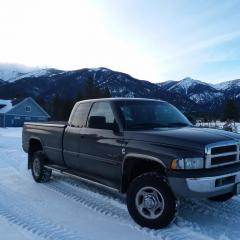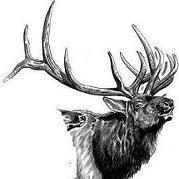- Replies 15
- Views 2.8k
- Created
- Last Reply
Top Posters In This Topic
-
 Tractorman 6 posts
Tractorman 6 posts -
 Mopar1973Man 4 posts
Mopar1973Man 4 posts -
 AH64ID 2 posts
AH64ID 2 posts
Most Popular Posts
-
Now I'm going to pass you over to https://smartysupport.com for a set of NEW BBi injectors for that truck. You'll have to talk to Brian and see what the prices are. They are currently still setting up
-
At 205K miles on CR injectors there is no real good reason to be rebuilding the injectors yourself in the truck. I don't think this is recommended by anyone. CR injectors, aside from R&R, are not
-
Might read these and see if they help out.


A friend of mine is the second owner of a 2007 Cummins 2500 truck, 4x4, auto transmission, - all stock parts. He purchased the truck in January of 2013 with 104,000 miles on the odometer. The odometer currently reads 205,000 miles. A tuner has been disconnected from the engine for troubleshooting purposes. Until recently, the truck has started and ran well. I am trying to assist him to diagnose the following problem.
In early December, he notified me that the truck started to run very poorly just as he was arriving home. He recorded these codes:
P0205 Fuel Injector 5 Circuit
P2149 Fuel Injector Group 2 Supply Voltage Circuit
Using a multi-meter he checked the resistance of all six injector solenoids for comparison. All were normal except for cylinder #5 which showed a high resistance.
On December 15th he replaced that injector solenoid with a new Bocsh unit. After the repair was completed the engine would crank over, but would not start. He said the starter seemed to be cranking at the normal speed.
On December 17th he was able to get back to the project. He primed the fuel system with the lift pump using the “bump the starter” technique for about 25 seconds. With battery jumper cables hooked up from another vehicle the engine started quickly and ran smoothly. All seemed well. He drove the truck for about 15 miles over the next couple of days.
It is a couple of days later and he notifies me and says that “check gauges” light came on and the engine oil pressure was reading very low. He checked the oil level and found that it was way over the full mark.
At this point I recommended to not drive the truck and I would come over to his house and assist. I checked the engine oil level – it was very high and diluted with fuel. I removed #5 injector solenoid to inspect the two o-rings. The one on the injector looked like it had a possible tear, so I installed a new one. The o-ring in the nut looked fine. I re-installed the injector solenoid and placed the valve cover on loosely, started the engine, and then shut it off about a minute later. I then removed the valve cover and restarted the engine to check for possible fuel leaks. Right away I noticed fuel coming out of the top of #5 injector solenoid. I realized then that the ball and set screw must be missing.
Since my friend had already discarded the old injector solenoid, I removed #1 injector solenoid and removed the set screw and ball for a sample. We went to the hardware store and with luck we were able to identically match both the ball and set screw.
We put everything back together and went to start the engine. The engine would crank, but not start (just like a few days before). Except, this time after many, many attempts it will not fire at all. We have now hooked up a battery charger to maintain the charge.
A few minutes later I crank the starter for a longer period of time and the engine catches, but only on one cylinder and is detonating as if the timing was extremely advanced. I release the key and the engine continues to barely run in this manner. A few seconds later I turn off the key because none of the other cylinders are picking up. During the time the engine was running, heavy white smoke was coming out of the exhaust.
A few seconds later I crank the engine, but no fire at all – just like before. I do a few more short starting attempts and have the same result – no fire on any cylinders. I am beginning to wonder if there is an injector leaking fuel into a cylinder causing low rail pressure and early ignition in that cylinder.
I decide to do an experiment. I disable the grid heaters and remove a through bolt on the intake manifold so I can get close to the cylinders with a small shot of ether. The idea is to get the engine to spin faster to build rail pressure. I have my friend start spinning the starter and I give a quick shot of ether into the intake manifold. I hear the smooth clatter of all cylinders firing briefly and the engine begins run again on only one cylinder, barely carrying itself, and detonating just like before with white smoke out of the exhaust.
At this point I am stumped. I am having trouble believing that replacing an injector solenoid would cause this symptom, especially after the truck ran fine for a couple of days despite the internal fuel leak.
Is it possible for an injector to have been leaking a small quantity of fuel into the cylinder for awhile (even before the injector solenoid replacement) and is now showing its ugly head?
I don’t have any access to the necessary test equipment to perform some of the tests that will probably be recommended on this forum. I would just like to hear from anyone who might be able to tell me if I am on the right track, or anyone who could get me started on the right track.
My friend just called me and said he just read the codes with his newly purchased scanner. The only codes currently displayed are P0201 through P0206 (Fuel injector 1-6 Circuit) and the code for the disconnected intake heaters.
I apologize for the long post, but I did not want to leave out any information that could help.
Thank you in advance,
- John